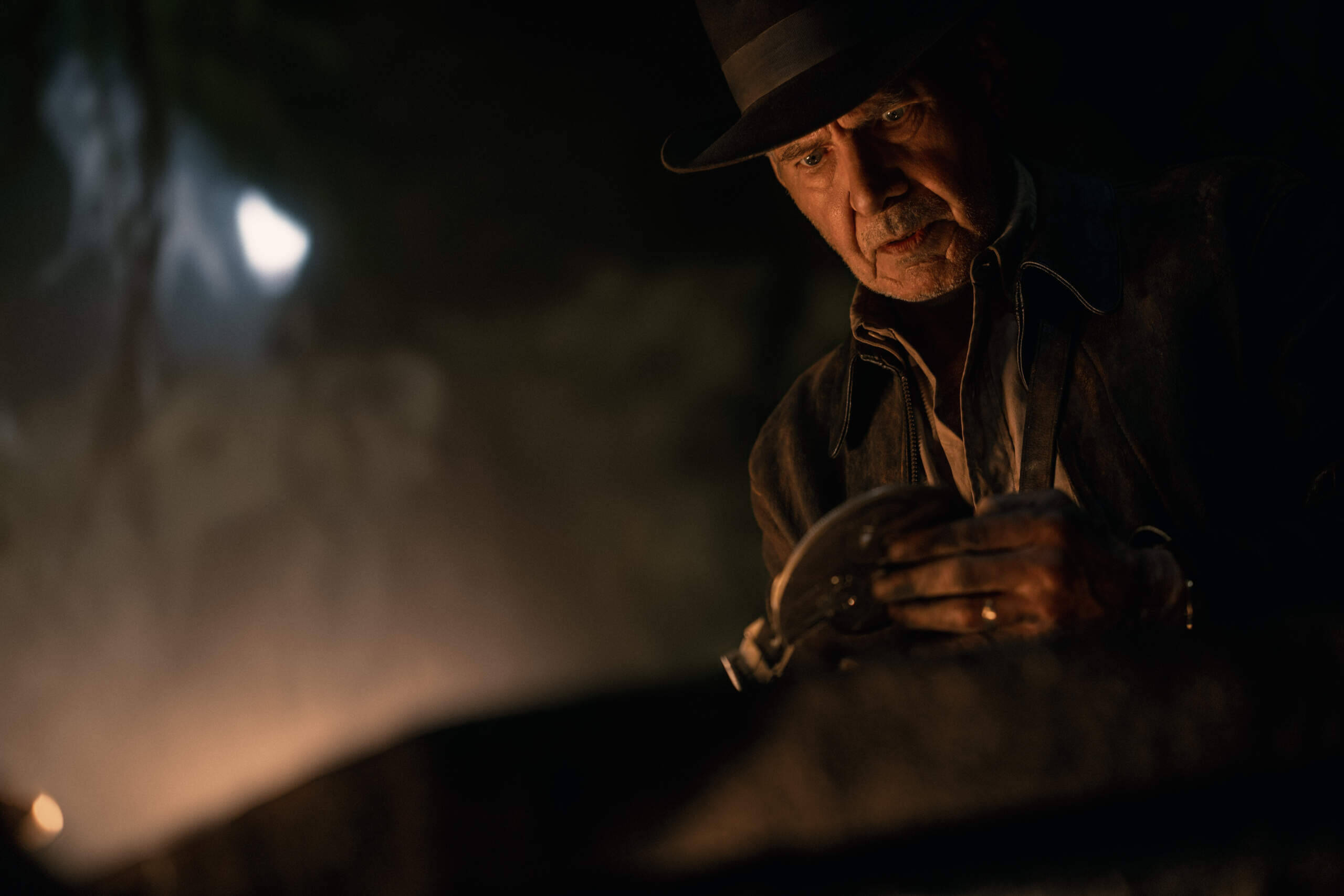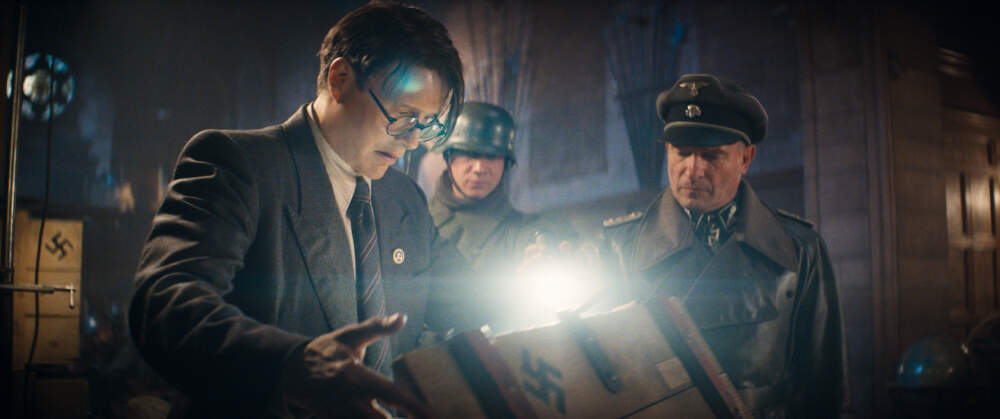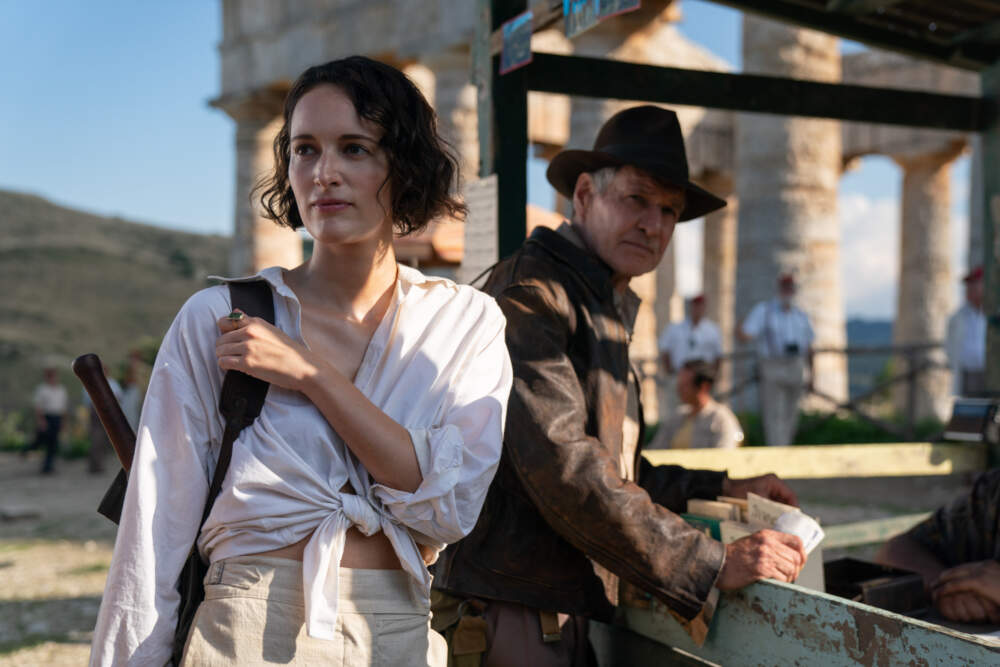Advertisement
Review
The creators of 'Indiana Jones and the Dial of Destiny' are chasing after a time machine

For a handy overview of pretty much everything wrong with contemporary blockbuster filmmaking, look no further than “Indiana Jones and the Dial of Destiny.” A joyless, enervated exercise in brand extension, this late-game exhumation of America’s favorite archeologist exists not because someone had a new idea or a story to tell but because it was an available asset in a studio portfolio. Basically, Disney was granted ownership of the character when the company purchased Lucasfilm for $4.05 billion back in 2013, and in keeping with the Mouse House’s mission to continue regurgitating our childhoods in perpetuity, one last hurrah starring a still-hale and hearty Harrison Ford was seen as a smart investment before the role inevitably gets recast for a whole new round of reboots with Chris Pratt or whoever.
Granted, 2008’s widely despised “Indiana Jones and the Kingdom of the Crystal Skull” didn’t exactly leave audiences clamoring for more. Though personally, I still feel like that film has a fairly strong first hour before it falls apart. (The infamous scene of Indy surviving a nuclear explosion by hiding inside a lead-lined refrigerator may have infuriated the internet, but it’s exactly the kind of gonzo imagination the rest of the picture needed more of.) This new adventure might just be bad enough to inspire a collective “Crystal Skull” reappraisal, as even a misguided movie made by Steven Spielberg and George Lucas is still a movie made by titans of the industry. In the depressingly obvious absence of these two geniuses who created the character, “Dial of Destiny” is filmmaking by committee — anonymous hackwork without an iota of inspiration or originality. There are four credited screenwriters, including journeyman director James Mangold, but the movie may as well have been scripted by an algorithm.
How fitting, then, that Dr. Jones and his associates are chasing after a time machine. We’re told that the Antikythera, aka Archimedes’ Dial, can locate fissures in the space-time continuum and was once the subject of a lengthy, train-bound tussle between our Indiana and Mads Mikkelsen’s Nazi professor during the waning days of WWII. This backstory is presented during an endless prologue for which Ford’s face has been digitally de-aged so that it matches “Last Crusade”-era Indy — an eerie effect rendered even more unconvincing whenever he opens his mouth and emits the raspy growl of an 80-year-old man.
The actor’s gruff, present-day persona doesn’t match Ford’s dashing 1980s demeanor in the slightest, but get used to it. As with the creepy, dead-eyed CGI Luke Skywalker so beloved by fans of Disney’s “The Mandalorian,” and that ugly, grave-robbing cameo by a resurrected Christopher Reeve as Superman in this summer’s “The Flash,” these unsettling, forever-young simulacrums of merely mortal movie stars might be the future of franchise entertainment.
Cut to New York City in 1969, where we discover Dr. Jones is now a crotchety old drunk, retiring — mid-semester, it appears — from an undistinguished post at Hunter College. His wife Marion has recently filed for divorce, and the crowd-pleasing fate of their son Mutt rather ruthlessly undoes the happily-ever-after ending of “Crystal Skull.” (Given Han Solo’s similar parenting mishaps, I guess the first rule of Disney sequels to Lucasfilm properties is making the Harrison Ford character’s life as miserable as possible in the interim.)

A heretofore unmentioned goddaughter named Helena, played by an intensely annoying Phoebe Waller-Bridge, arrives with a few questions about that clunky old dial Indy once rescued from the Nazi train. But she doesn’t know she’s being tailed by Mikkelsen’s mad scientist, now a Wernher von Braun-esque NASA engineer with plans for a Fourth Reich of his very own.
Almost nothing in the picture works. The action sequences are a smeary hodgepodge of poorly composited greenscreen effects and weightless, rubbery digital doubles being tossed around without consequence. It’s probably unfair for any director to try and follow Spielberg’s savant-like gifts for staging bodies in motion, but Mangold keeps the camera tucked in too close to establish any clear physical spaces. The chases are cluttered, overly busy and instead of ending, just sort of peter out. There’s no snap to these scenes, none of the unexpected cause-and-effect punchlines that make the earlier movies so much fun to watch.
And the whole picture is paced like this. It’s logy and crowded with overlong expository scenes full of red herrings while new characters are introduced, only to abruptly disappear. (Hola and adios third-billed Antonio Banderas.) Early in the film, Indy finds himself a fugitive framed for the murders of two Hunter College colleagues. You’d assume that this might somehow figure into the story or maybe be mentioned again. You’d be wrong.
“Indiana Jones and the Dial of Destiny” is 39 minutes longer than “Raiders of the Lost Ark,” and I’d wager about half as much happens. I still don’t have a handle on how the central doohickey is supposed to work. The story feels like it’s been studio noted to death and rewritten into incoherence. This is especially true in the case of Waller-Bridge’s character, who is so grating she’ll make you long for Kate Capshaw.

Transparently written to pander to a studio executive’s idea of an imaginary younger female demographic, Helena spends most of her screen time throwing around smugly contemporary, Twitter-friendly zingers about capitalism and cultural appropriation. (As a friend pointed out after our screening, all of the most horrible young men on the internet are going to be insufferable about this character, and the worst part is that some of them won’t be wrong.) I’m as big a “Fleabag” fan as anybody, but Waller-Bridge’s performance is so massively miscalculated I worry that being the Jar Jar Binks of “Indy 5” could do considerable damage to her career.
Her self-congratulatory snark is most at odds with a gorgeously elegiac turn by Ford in a film that doesn’t deserve him. He’s spent most of these past 25 years phoning it in, so you never know when Harrison Ford is going to show up for work. While I prefer the slightly sketchy Indy of the first two films when he was still a bit of a scoundrel, there’s something about the character’s forthright decency, as codified in the more family-friendly “Last Crusade” and touchingly revived for “Crystal Skull,” that really seems to resonate with the actor. He’s so straightforward and sincere; it feels unfair for Ford to be giving a performance this deeply felt in a film with such slovenly cinematography. (There is no excuse on God’s green Earth for a movie that cost $300 million to look this bad.) When Ford finally gets a chance to revisit his crackling chemistry with Karen Allen, the screenplay is so bereft of ideas they’re stuck reciting old dialogue from a previous picture.
But that’s the whole point of these things now, isn’t it? Indy and the Nazis aren’t the only folks chasing after a time machine. We want that nostalgia dopamine kick, however diminishing the returns. In a recent, scathing Newsweek editorial warning about the dangers of artificial intelligence, actress Justine Bateman astutely pointed out how Hollywood’s constant spate of sequels, reboots and remakes primed us for an AI future of an endlessly recycled late-20th-century culture. (Disney’s “live-action” remakes of their animated classics are already indistinguishable to me from AI art.)
Once upon a time, young filmmakers like George Lucas and Steven Spielberg were inspired by the space operas and pulp serials of their childhoods to create grand flights of imagination like “Star Wars” and “Raiders of the Lost Ark.” Nowadays, young filmmakers who grew up on “Star Wars” and Indiana Jones movies just make more “Star Wars” and Indiana Jones movies. Or comic book franchise films full of clever cameos and cool references to stuff we’ve already seen. So we beat on, borne back ceaselessly into the past.
“Indiana Jones and the Dial of Destiny” is now playing in theaters everywhere.
